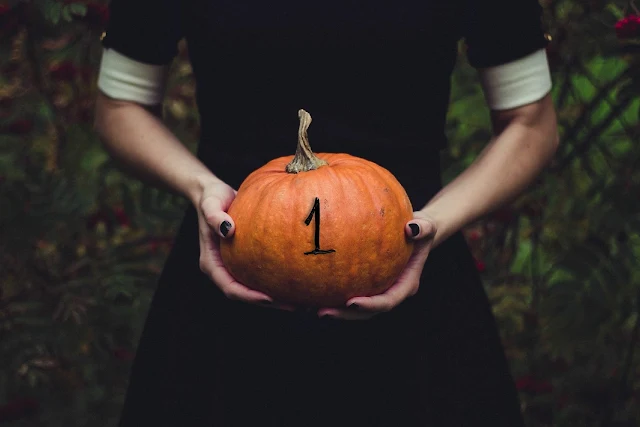Thursday 23rd September 2021
The Lowry, Salford
Although September has been dominated by the Greater Manchester Fringe for me, I’ve also had the opportunity to see some non-Fringe theatre this month. On Thursday 23rd September, I was at
The Lowry in Salford to see
The Ballad of Maria Marten by Eastern Angles. I’ll be reviewing this production for
Hannah’s Bookshelf, my weekly literature show on
North Manchester FM, on Saturday 2nd October, but here’s the blog version…
Written by Beth Flintoff and first performed in 2018,
The Ballad of Maria Marten is the story of a notorious and gruesome murder that took place in Suffolk in 1827. Except that it isn’t. And that’s what makes this play special.
The murder of Maria Marten by William Corder sparked a media frenzy at the time, and the case was almost instantly immortalized in ballads, broadsheets, popular theatre and – later – film dramatizations. The grisly nature of the victim’s injuries, the fact that her body lay undiscovered for a year after her death, and the infamous treatment of her killer’s body after his execution, was a gift for sensationalizers. Over the years, writers have devoted their attention to William Corder’s character, suggesting various possible motives for his crimes, and to suggesting alternative theories that might throw doubt on his guilt (despite his confession). There have also been some sustained efforts to imply some culpability on the part of the victim: Maria’s three illegitimate children have been used as evidence of her ‘loose’ character, and her lower class status has equally been a talking-point in some accounts of the case.
The Ballad of Maria Marten stands as a powerful – and timely – corrective to this tradition of presenting the case known as the Red Barn Murder. It is explicitly
not the story of William Corder’s crime, but rather the story of Maria Marten’s life.
 |
Photo credit: Tony Bartholomew
|
The play begins with the rather unsettling entrance of a spectral Maria Marten (played by Elizabeth Crarer) walking onto the stage in the tattered remnants of the clothes she was wearing when she was buried. She holds a ragged umbrella over one shoulder, and the injuries she sustained before her death are brutally visible on her face and neck. Maria addresses the audience – as she will do a number of times during the show – confronting our expectations and questioning how much we think we know about her. She talks about her own death and the nature of the injuries she sustained, but she refers to her killer only as ‘he’ and ‘him’. There is no direct evocation of William Corder at this point of the story.
What follows this entrance really sets the tone of the rest of the production. I’ll confess that I was expecting to get a lump in my throat at the
end of the play, so the fact that I was welling up at the beginning was a bit of a surprise.
A group of women, singing softly, surround the spectral Maria and remove the tattered clothing. Bringing bowls and cloths, they wipe off the marks of her injuries, and then tidy her hair and redress her in fresh clothes. According to the programme, Flintoff’s original notes in the script state that these women ‘unmurder’ Maria, and this is exactly how I experienced the scene. It’s a dramatic and empowering sequence, but it is also one weighty with sadness due our knowledge that Maria
was murdered. Whatever we see on stage from this moment, Maria’s ending is in part already written.
 |
Photo credit: Tony Bartholomew
|
The play is about Maria’s life as a young working-class woman in Polstead, Suffolk in the 1820s, beginning when she is ten years old. In the first act, we meet Maria’s friends: Phoebe (played by Jessica Dives), Theresa (Bethan Nash), confident Sarah (Lydia Bakelmun) and awkward outsider Lucy (Susie Barrett), with whom she dreams of being as bold and adventurous as men are allowed to be. We also meet Maria’s new stepmother, Ann (played by Sarah Goddard), who is young and nervy, but determined to be a good friend to her newly acquired family. Ann’s arrival is told with humour and warmth, but it also serves as a stark reminder of social context. While we might giggle a little at Ann’s clumsy attempts to befriend Maria, she also articulates a very real fear of rejection. If Maria doesn’t accept Ann, then her father might decide not to marry after all. She has nowhere else to go if he ends their engagement, and she fears the workhouse might be her only option. For all their boldness and camaraderie, the women in this world are entirely reliant on the whims of men.
Nevertheless, Maria’s life plays out for us with verve, humour and hope. The performances are excellent. Crarer is captivating as Maria, capturing her youthful ambitions and aspirations, but tempering this with an edge of confrontation as she breaks the fourth wall and reminds us of what will happen to her when she’s just twenty-five years old. Goddard’s performance as Ann is also very striking. Her depiction of Ann matures before our eyes, from the nervous new stepmother to a solid and constant presence in Maria’s life. Goddard brings to life a good and kind woman who deals with life’s hardships as best she can, until bringing us to a heart-breaking first act finale with raw and visceral emotional depth.
While it’s easy to see the other characters as foils to Maria – images of alternative models of working-class womanhood in distinction to Maria’s own path – the actors bring depth and humanity to their performances that creates more of an ensemble feel. In addition to playing Maria’s friends, some of the actors double up on parts. Bakelmun plays the lusty and worldly-wise Sarah, but also appears as Lady Cooke, a member of the gentry who takes a shine to Maria and serves to remind us that sometimes it
is hard to be a woman, even when your family owns most of the village’s land.
The play has an entirely female cast – a deliberate creative choice – but some male characters appear. The fathers of two of Maria’s children, Thomas Corder and Peter Matthews, are played by Barrett and Nash respectively. Barrett brings Thomas Corder to life as a young and arrogant man who enjoys lording his elevated status as a farmer’s son over the labouring classes. However, Barrett also gives him some humanity, and the emphasis on his youth means that we never truly hate him – we just don’t feel he deserves the respect of a woman like Maria. Nash has the unenviable task of performing the closest thing the play has to a ‘good man’, and her portrayal of Peter Matthews has a softness bordering on tragedy.
As noted, no one plays William Corder. This character ‘appears’ towards the end of the first act, and is central to the developments of the second, but he never appears on stage. We learn of his character from the reports of others, and we learn of his actions by seeing the devastating effects they have on Maria.
 |
Photo credit: Tony Bartholomew
|
The actors offer us performances steeped in humanity and empathy, and the script gives us a solid balance between engaging humour and brutal truths. But the production’s energy and vitality is the result of a strong creative team. The single set (set construction by Dominic Eddington and scenic art by Caitriona Penny) – dominated throughout by the façade of the barn in which Maria’s body was hidden – works well, as it is seamlessly transformed into Maria’s cottage, a village fair, the drawing room of Lady Cooke, and various locations around Polstead. Costumes and wardrobe by Faby Pym are also well-designed and put to powerful use. In addition to the dressing and undressing scenes we see on-stage (following the initial ‘unmurdering’ sequence, there are a number of other moments in which Maria is recostumed by women in front of our eyes), the quick changes required by the actors doubling on parts is quite amazing. I swear there were times when I was convinced I’d seen Sarah and Lady Cooke, or Lucy and Thomas Corder, on stage at the same time, despite the fact that the characters’ costumes were distinctively and elaborately different! All credit to Hal Chambers’s direction for pulling off this effect.
It has to be said, however, that it is the play’s ending that will really stick with audiences. As I’ve said, this isn’t the story of the murder of Maria Marten or the trial and execution of William Corder in the usual sense. It ends, then, not with Corder at the gallows, but with the burning of the so-called ‘Red Barn’ (the building that has dominated the production’s backdrop, that Maria has constantly reminded us was the scene of her demise, that has become a byname for the case itself, and that the programme and marketing material has shown engulfed in flames). Following the execution of William Corder, this building became a dark tourist attraction in Polstead for a time, before it was burnt down, presumably by irritated locals.
The Ballad of Maria Marten transforms this historical moment into a powerful summation of the play’s central message, ‘unmurdering’ Maria as surely as the re-dressing sequence at the beginning of the first act. I defy anyone not to shed a few tears as the smoke begins to rise.
The Ballad of Maria Marten is a stunning piece of theatre. It is timely in its message – the programme notes the murder of Sarah Everard as an example of why Maria’s story continues to be relevant, and I was chillingly aware of Sabina Nessa’s murder while watching, which occurred just six days before the show’s press night at The Lowry, but the production was also informed by creative workshops with survivors of domestic violence and abuse, and its depiction of gaslighting and coercive control is truly unsettling in the way it feels both startlingly modern and convincingly historic at the same time.
You may be wondering whether you should go and see
The Ballad of Maria Marten if you are unfamiliar with the Red Barn Murder case. Or, conversely, you may be wondering if there’s any point in going to see it if you feel you already know everything there is to know about William Corder, his crime and his execution. In both cases – or even if, like I was, you’re somewhere between the two – this is a strong recommendation. This is a play that is more ‘true life’ than ‘true crime’, with compelling performances, a thought-provoking script, and excellent production and direction, and it’s definitely worth checking out.
The Ballad of Maria Marten was on at The Lowry, Salford as part of a national tour. For more information about upcoming performances, please visit
the show’s website.















































